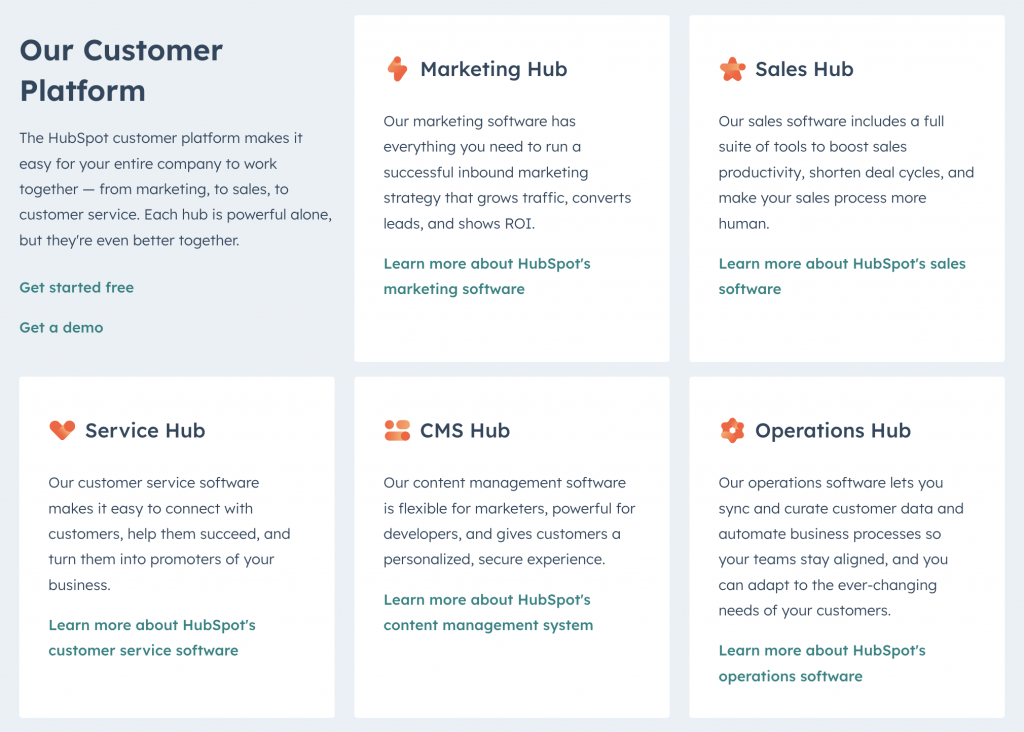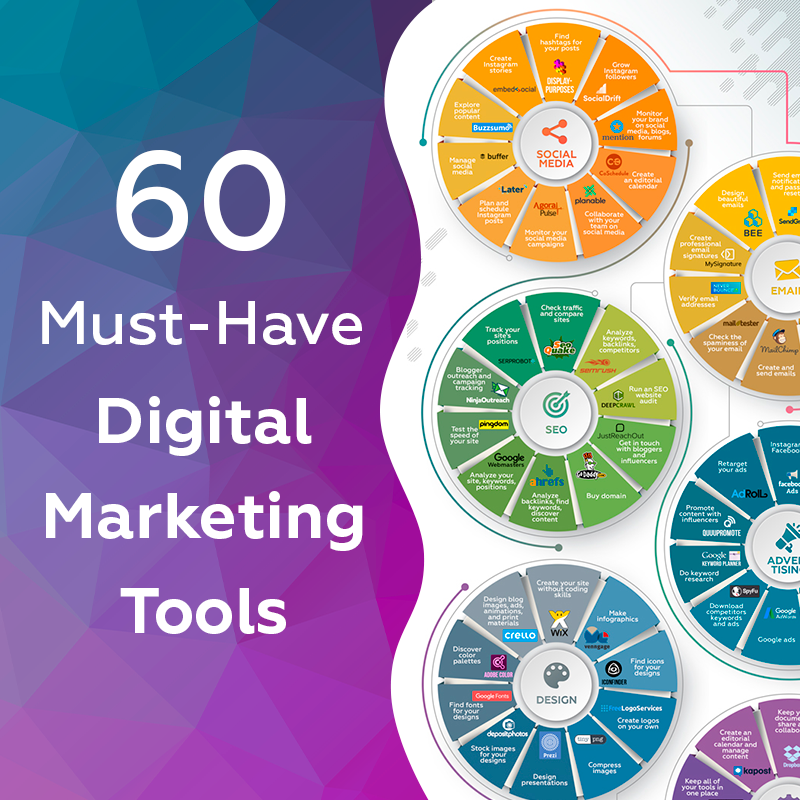What is Product Marketing for Industry Professionals?
You might be a well-established company launching one product line after another, or a small startup getting ready to present its first product to the world. In any case, you still need a strong product marketing strategy to succeed.
No matter how innovative and efficient your product is, it can still struggle with reaching its target audience. Product marketing solves this challenge, making sure that it not only sees the market, but also performs well.
Read further to explore product marketing meaning and figure out how it can benefit your brand.
What is product marketing?
Let’s start with the product marketing definition. It’s the process of delivering your product to the market and helping it stay there and to succeed. To achieve this, managers conduct thorough research of the market itself, target audience, and competitors. Then they develop a strategy containing the product’s positioning and messaging that is appealing and easy to understand by the customers.
Only after that, a product is launched.
Sometimes, it can be challenging to understand the difference between product marketing vs marketing. The latter is a great, but more general tool used to ensure that your brand will find its target audience, as well as capture and hold their attention. You can achieve this by utilizing different types of marketing.
To get free downloads, click the banner above, switch to «Annual Upfront» subscriptions, and press the «Free 7 Day Trial» button.
How does marketing help your product?
- research allows you to gain valuable insights and adjust your product to market and customer demands;
- the right positioning of your product helps set it apart from competitors and highlight its value;
- launch and pricing strategies help successfully introduce your product to the market and set the competitive profitable price for it;
- teams obtain the necessary tools and resources to sell the product effectively: documentation, sales collateral, and competitive analysis;
- after the product is launched, you can improve and update it based on the feedback collected from customers, sales teams, and other stakeholders;
- coming up with product marketing metrics and KPIs allows you to measure performance and make data-driven decisions;
- all the data, metrics, and insights collected in the product marketing process can help you identify growth opportunities, whether it’s expanding into new markets, introducing complementary products, or exploring partnerships.
Product marketing vs product management
It can be quite difficult to figure out the difference between product marketing vs product management. Both roles look quite similar, as each of them includes market research, plan development, and collaboration with multiple departments. Both roles use tools such as journey maps, user stories, and user personas.
However, product management is the process of creating a product. To achieve this, product managers work hard to figure out the needs and interests of a target customer. They then use these insights to develop a product that would meet their expectations and help solve certain problems. Such professionals create the initial conception of a product, help bring it to life, and then support it until the end of its lifecycle.
They focus on:
- the general vision;
- ensuring that the product meets market needs;
- the product’s system requirements;
- setting and tracking metrics of success.
Product marketing, on the other hand, is the process of bringing a product to the market and helping it sell. Product marketing managers work with created products, coming up with the most efficient ways to present them to a target audience.
This can include:
- packaging;
- positioning;
- developing narratives that convey the value and benefits of the product;
- ensuring market growth;
- working on customer retention.
Top product marketing examples
Learning from the best of the best is always a good idea. Check out these successful product marketing examples to gain insights that you can use later in your strategy.
Apple

Source: Apple
Apple sells smartphones, tablets, notebooks, and other tech devices. Still, to many of the brand’s loyal followers, Apple offers more than just that — it comes with a feeling of exclusivity and high quality. Apple goods are one of the most expensive in their niche and still, they sell well. In the fourth quarter of 2023, Apple’s global revenue reached $89.5 billion.
That’s what great product marketing can do.
One thing Apple’s audience likes the most is the simplicity of its products and their presentations. The design and the key message are very precise yet simple. The product lines are generally very minimalistic too: there aren’t too many choices and options to pick from. The presentations and the tech instructions are easy to understand, stripped of any complex tech terms.
As a result, the brand doesn’t overwhelm customers. This simplicity also contributes to that feeling of exclusivity. Just like a little black dress is considered chic, not plain, Apple products are considered special, not ordinary.
Notion

Source: Notion
Notion is definitely not the first note-taking app on the market (for instance, Evernote was released years before and is still used). So what exactly helped Notion succeed on the market when there was already at least one leader?
The answer is positioning. Notion’s product marketing plan involved positioning the app as not only a note-taker, but as a task and team management solution as well. The ability to combine all these features into one workspace and customize them as needed helped Notion gain trust and build a loyal audience of students, corporate workers, entrepreneurs, and others.
HubSpot

Source: Hubspot
HubSpot is a CRM software platform that helps businesses of all sizes launch marketing strategies, manage customers, and boost sales. However, many marketers know HubSpot as one of the biggest and most trusted resources.
To promote its product, HubSpot uses lots of top-quality free content, including expert blog posts, guides to use the tool, and product-related case studies. This helps the company build and strengthen its authority, driving more potential customers.
Squarespace

Source: Squarespace
Squarespace is a no-code tool for website building. It allows anyone to create a website by picking a template and customizing it to your needs. Due to its simplicity and affordability, Squarespace is widely used by bloggers, eCommerce companies, small businesses, and entrepreneurs.
Its simplicity is also a part of Squarespace’s unique selling proposition (USP). You can start building a website for your business quickly, for free (at least, during the trial), and with no coding skills and tech knowledge. And the result will look polished and professional.
Spotify

Source: Spotify
Although Spotify was launched 7 years earlier than Apple Music, it still had to compete with the latter. The competition was and remains high because Apple Music basically comes with every Apple product. Why should people look for another app (that has to be downloaded additionally) when they already have a built-in app for music listening?
To stay relevant in such circumstances, Spotify had to grow and adjust. One of its main advantages is the freemium model. You can listen to Spotify for free, but if you want to remove ads, you’ll have to switch to a paid subscription. Apple Music, on the other hand, doesn’t have a free plan.
Spotify also offers some features that Apple Music doesn’t have, such as video podcasts and audiobook purchases.
To get free downloads, click the banner above, switch to «Annual Upfront» subscriptions, and press the «Free 7 Day Trial» button.
What is product marketing lifecycle?
The product marketing lifecycle is the process of marketing a product from its first introduction up until it leaves the market. It usually consists of four stages.
1. Introduction
This is the first step of your product in marketing. At the introduction stage, you either launch a product or (if it’s launched already), focus on helping potential buyers learn about it and drive purchases. To achieve this, marketers develop and launch advertising and campaigns.
This stage might seem like the most challenging one as sales are slow and the profit isn’t impressive. It could also take time, especially when a product is complex, innovative, and relatively new to the customers, or the market is highly competitive. However, if everything’s done right, a product will eventually reach the growth stage.
2. Growth
If your product and its marketing are successful, it gradually enters the growth stage. At this stage, the product experiences the sharpest increase in sales as demand for it rises. The production numbers can also grow.
Now, more people know, recognize, and like your product. Some companies decrease their advertising investments at this stage, while some continue to invest heavily — for instance, if a product has lots of competitors. It also becomes more important to differentiate your product from others with the help of branding and functionality improvement. Pricing also plays a significant role at this stage as you need to monitor and adjust it to stay ahead of the competition.
3. Maturity
This stage is the most profitable one. Maturity means that your product reached a dominant position on the market, and its marketing and production costs declined. While this stage seems quite triumphant, competition is now higher than it will ever be. It also means that the market is saturated with your product and its analogs from competitors. So, if you still want to cover a larger audience, you might start thinking about how to improve or innovate your product.
In any case, a company’s main interest at this point is to keep the product in the Maturity stage for as long as possible. Because the fourth stage is Decline.
4. Decline
Decline is the inevitable last stage of a lifecycle. During it, both sales and profits reduce and the product starts leaving the market. It can be caused either by rising competition and market saturation or by new innovative products that are superior to your existing ones. Let’s take mobile phones as an example: the old-school phones with buttons were eventually replaced by touchscreen ones.
Despite all of the above, the Decline stage doesn’t necessarily mean a crisis for your company — it simply implies that you have to say goodbye to the existing product or, at least, produce it at the existing volumes and costs. Reinventing the existing product or introducing its new, upgraded version can also be a solution here. However, if the upgrade is too massive, it might be better to start a new lifecycle for this version.
To get free downloads, click the banner above, switch to «Annual Upfront» subscriptions, and press the «Free 7 Day Trial» button.
What are the most effective strategies in product marketing
A product marketing framework can differ from one company to another and from one product to another. Still, there are some essential and efficient components that you should consider adding to your strategy to maximize the impact of your product marketing.
Here are the most successful strategies in product marketing to consider.
1. Define your target audience
Knowing who exactly your audience is allows you to tailor your product and its promotion precisely to their needs. 82% of marketers support that, saying that having high-quality data on their target audience helps them succeed in their role.
To figure out who you are marketing and selling to, conduct market research that helps identify your buyer personas.
Buyer personas are fictional characters that represent your perfect customers. Using them in product marketing helps you visualize your target audience, come up with the right tone of voice and content for them, and generally create a more precise strategy.
Key characteristics of buyer personas that you should focus on are:
- age;
- gender;
- location;
- job;
- family size;
- income;
- pain points.
Most likely, your company has a certain vision of buyer personas when it creates a new product. The product marketing manager’s goal is to structure that vision, come up with a realistic description of it, and then reach out to people who match this description to verify if they truly are the target audience you should focus on.
To achieve this, you can conduct user interviews or launch surveys about your product, paying attention to not only what the respondents are saying about, but to the words they are using, their interests, purchase preferences, expectations, and pricing.
2. Use customer insights to determine brand positioning and messaging
The data collected in the previous step can be used to understand your audience better and figure out how to be on the same page with them while promoting your product. Your brand has to resonate with customers emotionally and you can achieve this by the right messaging.
Pick a narrative that your audience can relate to and identify your product’s unique selling proposition (USP) to create a compelling story. USP includes the product’s features and benefits that can help it stand out among competitors. You have to highlight how it solves customer pain points and explain this in your messaging.
Don’t settle with your first messages: run some A/B tests to see which of them perform better and use the testing data to improve them further.
3. Consider retargeting existing customers
If your company isn’t releasing their first product, you can seize that opportunity and retarget existing customers to a new offer. This can be achieved by:
- offering them an exclusive discount
- adding a sample as a gift to their next purchase
- cross-selling a new product
- creating a custom campaign for existing customers
4. Monitor and adjust product performance
As time goes on, user needs and pain points change. You need to track them to ensure that your product will stay relevant and remain in the already mentioned Mature stage as long as possible.
Collect user feedback and track KPIs to figure out what works well for your product and what can be improved. Don’t hesitate to modify and update your product strategy if you feel this is necessary. When you identify some key steps and tactics that helped you achieve desired results, consider implementing them in marketing strategies for your new and future products.
To get free downloads, click the banner above, switch to «Annual Upfront» subscriptions, and press the «Free 7 Day Trial» button.
To wrap up
Product marketing is the process of getting your product noticed and loved by target consumers. If done right, it can help you set your product apart from competitors, ensure stable sales, and identify data-driven growth opportunities. While every product lifecycle eventually comes to an end, understanding how to create and implement a proper strategy for positioning and promotion can help you keep a product competitive for as long as possible. You can then utilize this knowledge for marketing future products.
FAQ
What is a product in marketing?
In marketing, a product refers to any offering that is brought to the market to meet customer needs and provide value. Products can include physical goods, services, digital offerings, and even ideas or concepts. All of them use marketing strategies and positioning to attract customers and fulfill their desires.
What does a product marketer do?
A product marketer is responsible for promoting and positioning a product or service in the market. They develop strategies for target audience engagement, pricing, messaging, and product launches, collaborating with cross-functional teams to ensure the product’s success throughout its lifecycle.
Why is product marketing important?
Product marketing is crucial because it works on helping audiences accept a product. It ensures that the product aligns with customer needs, is effectively positioned, and is communicated in a way that resonates with the target users. Effective product marketing increases sales, brand recognition, and customer satisfaction, helping the product succeed on the market.
Other articles you might find interesting
Reputation Management: How to Protect Your Brand
Crafting Your Mission Statement: Best Examples & Ready-to-Use Free Templates
Leadership Styles Demystified: Finding Your Path to Success












